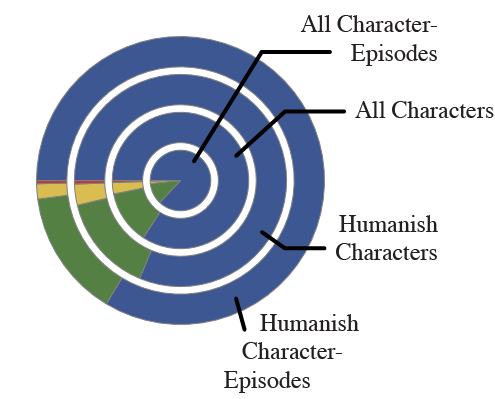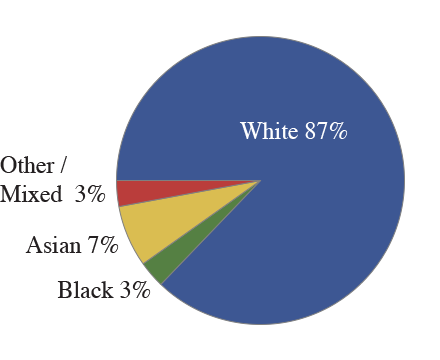Last week marked the end of The Nightly Show, the Daily Show spinoff hosted by Larry Wilmore. It was a real shame, both because the show had great potential and moments of brilliance, and because its cancellation meant a real blow to the already meager diversity of late-night TV. So what went wrong?
Obviously, the proximal cause of the cancellation was low ratings. But why weren’t people watching? A part of the explanation is probably that there is simply not a large enough audience of people who are interested in / comfortable with the explicit emphasis on issues of race. But I’m not convinced that that is the entire reason.
I watched The Daily Show since forever, I loved Larry Wilmore’s segments, and I enthusiastically tuned in to The Nightly Show when it started. After a few weeks, though, I gave up, because it was boring. The problem wasn’t a lack of subject matter. Unfortunately, our country generates plenty of material to support a satirical news show with a focus on race.
The problem, in a word, is twitter. In a phrase, it’s the rise of short-form social media. Let’s rewind. For a long time — especially the ten or so years after 9/11 — The Daily Show offered some of the smartest takes on both news events and the traditional media coverage of those events. The format followed the standard topical-news satire formula of SNL’s Weekend Update and every late-night opening monolog: basically a series of one-liners. Even the correspondents’ segments were dominated by a series of thematically related one-liners. They were funny and intelligent, which is particularly impressive when the topics are actual news items, where the cycle of event to writers’ room to filming happens in less than a day.
For the last few years of Jon Stewart’s tenure, though, the show started feeling a little flat. Maybe Stewart was running out of steam — it’s certainly an exhausting schedule — but part of the story was the maturation of the ecosystem of twitter, facebook, and the like. When something newsworthy happens, the internet hivemind explores the space of one-liners with ruthless efficiency. A culture of appropriation and plagiarism means that a hundred minor variations emerge from the best takes, leading to fine-tuned joke optimization.
Over the past few years, when The Daily Show would cover a story that I had been following, I had often already heard some version of a lot of the punch lines. It’s not, I assume, that the writers were cribbing off of twitter, it’s just that the collective efforts of a million amateur comedians desperately vying for attention will outstrip any writers’ room.
Of course, if you weren’t following the news obsessively, The Daily Show was still great, it’s just that it was no longer special. There’s a limit to your show’s specialness when its content can be replicated by a Buzzfeed listicle of the 17 funniest takes on Trump’s latest gaffe. Trevor Noah’s Daily Show has been fine, but continues to suffer from this same fundamental problem: what it is offering is something that you can find a lot of places on the internet.
Contrast that with The Daily Show‘s other recent spinoff, Last Week Tonight with John Oliver, which feels vital in the way that The Daily Show did ten years ago. The key difference is its move towards longer-form pieces. It does the standard one liner–based news recaps, but this is a small part of the show. Each episode also features a deep dive on one topic. That deep dive features a lot of one-liners, but the featured topics are chronic societal problems, so they haven’t been freshly digested and regurgitated all over the internet.
Unfortunately, The Nightly Show went the other direction. Each show started off with the standard topical one-liners, but the show’s format centered around a round-table discussion among Wilmore and a mixture of guests and staff writers. The result was basically the equivalent of the sort of brainstorming session that might lead to a great topical news show. The results were occasionally brilliant, but more often resembled a comedy Before photo. The Daily Show‘s relevance declined when it became possible to replicate its comedy and insights with a well curated twitter feed. The Nightly Show is similar, but with less curation.
If there had been a network executive ten years ago with the courage to put The Nightly Show on the air, it might have been one of the most important shows of the decade. But now, the space of snarky news commentary and skepticism of traditional power structures is crowded — even after the demise of Gawker. The Nightly Show simply had too much competition for the limited number of eyeballs available for an in-depth look at race.
Launching The Nightly Show in a world with fully weaponized twitter is like launching a luxury rickshaw service in a city overrun with uber drivers. I hope someone figures out how to make this work. The combination of long-form investigations and elaborate stunts favored by Last Week Tonight is one option. (Next Week Tonight? Last Week Tomorrow?) But there must be some clever folks with other ideas. After all, people keep telling me that this is the golden age of television. Right?


